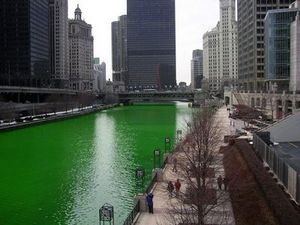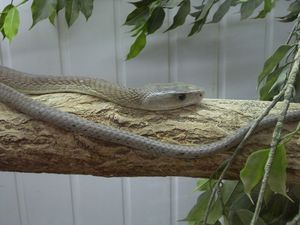Elementary school is a time for children to learn and to develop their taste in a variety of subjects. To ensure that this happens, elementary school teachers try to make learning as interesting and enjoyable as possible. To bolster a love of science, many elementary schools require (or encourage) students to turn in elementary science fair projects. Although parents may be tempted to take over during an elementary science fair project, the true goal is to help your child create a project that will allow him or her to foster a love of science that will last a lifetime. Fortunately, there are a great many elementary science fair projects that are easy enough for a child to do by him- or herself without having to resort to the old volcano standby, which, though interesting enough for an individual child, might not prove as meaningful as an actual elementary science fair project.
First, there are a few points that need to be addressed before one can even begin to develop ideas for an elementary science fair project. One of the most often overlooked factors in developing an elementary science fair project is the incorporation of the scientific method. The second is assuring that the elementary science fair project is age-appropriate. The final is the most important: make sure that the elementary science fair project is something that your child can complete by him- or herself, with minimal adult aid.
The scientific method need not be as developed as it would be in an upper level course, but elementary science fair projects should demonstrate the basic principles of the scientific method to the student, in addition to providing an enjoyable introduction to science overall. The student ought to come up with a question they wish to answer first. For the average child, this is about as difficult as breathing: how many of us have been driven nearly mad by the “whys?” of children? Here you’re offered a reprieve. Have them figure out their own answer. Once the question has been established, a hypothesis must be created. For an elementary science fair project, this is akin to asking the child “I don’t know; what do you think?” Moving through the rest of the stages depends on the age of the child working on the elementary science fair project.
To be blunt, although many children are full of “whys?” when they are out and about with you, when it comes time to sit down to an elementary science fair project, most children develop scientist’s block. Sometimes they need ideas to help them get started. Below are some tried and true elementary science fair projects.
For the youngest children (less than grade 4), it is most important not to allow the child to overwhelm him or herself with their own question and elementary science fair project. The world is still a very new place to these children, and an elementary science fair project can simply be a model of how something works. For older children, more intricate experiments are possible. Below are possible experiments, with age ranges and type of experiment done for an elementary science fair project.
Earthquakes (ages 4-8; Earth Sciences): Take a perforated graham cracker and break it along the perforation. Put the pieces back together and slide the two pieces back and forth. Watch the crumbs carefully, for they represent what happens at the sides of a fault line during a small earthquake. Now, break one of those two pieces in half again. As with the first half of the experiment, slide the pieces back and forth again. These pieces should not slide very easily and bigger crumbs break off than in the first part of the experiment. This elementary science fair project shows what would happen during an earthquake. Have the child look up images of earthquakes and descriptions of what happens. These descriptions make a lot more sense once the child has seen the smaller effect of the graham cracker hands-on.
Star Charts (ages 4-10; Astronomy): This elementary science fair project can be as large or as small as you and your child would like. All the child needs is a piece of graphing paper, a pen or pencil and a small flashlight. Have the child focus on a set area (for instance, around the moon) and sketch out the stars. Their sketches can be compared against star charts already inexistence, and the child can identify constellations. For older children, sketches can be made at different times of the year or at different times at night. Have the child discuss the reasons why they think the stars are not the same at all times, then have him or her look up the real reasons. As an elementary science fair project, this one is great for students interested in the stars or for particularly crafty children who like to draw. As an added bonus, very little adult aid is necessary, but the child learns a lot. Scientifically, it sometimes raises more questions than it answers, which is really the goal of elementary science fair projects.
Worm Sense (ages 8-12; Life Science): This elementary science fair project is one that I did for my school growing up. Worms cannot see in the traditional sense, but they can sense light. However, different colors of light are experienced differently, and some not at all. First, construct a worm box, divided into three sections and fill with a layer of dirt. Don’t make this layer too thick, but make it thick enough for worms to move comfortably in it A fluorescent light needs to hang above it. I used, with my father’s aid, wood, but other materials may also be used that involve less help from adults. Cover the two side sections with red and green cellophane (one for each section) and cover the center section with clear cellophane. Place worms evenly distributed throughout (worms can be purchased at bait shops). Each day, count the worms to see how many are in each section. After a week, find out whether there was a shift. Are more worms in one location than another?
Lead in the Water (ages 8 and up; Environmental Science): This is another elementary science fair project that I have personally tried, as well as helped other children try. Using a lead testing kit, the child will test water in a variety of locations. Some ideas include school water fountains, a home with city water and a home with well water. Write down the amount of lead in each location. The child can look up the amount of acceptable lead in the water on the EPA website. Discuss potential dangers of lead and ways that authorities try to limit lead exposure.
Soap Bubbles (ages 10 and up; Physics): This experiment is potentially both dangerous to furniture and messy, so only older children should attempt it as an elementary science fair project. Mix equal portions of glycerin and water with a dab of liquid dishwashing detergent. Using wire frames (paperclips or hangers work well for this) in a variety of shapes and sizes, create soap bubbles. This opens a lot of discussion regarding how soap bubbles are formed and the nature of surface tension. Properties of glycerin and detergent can also be discussed.



